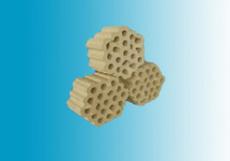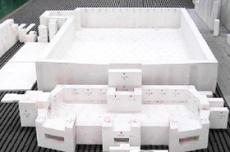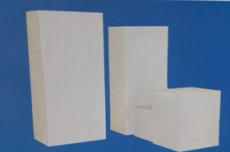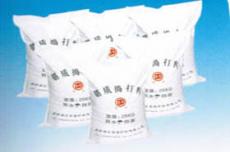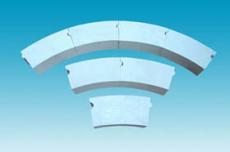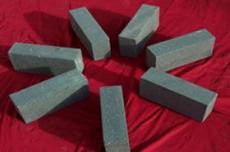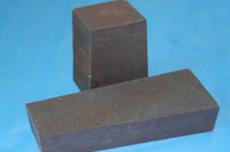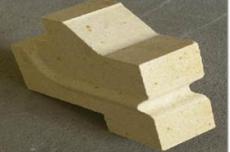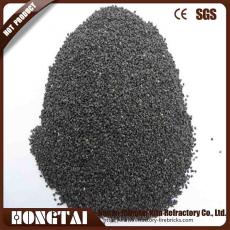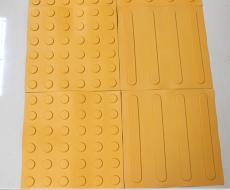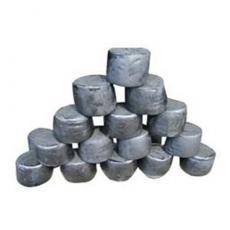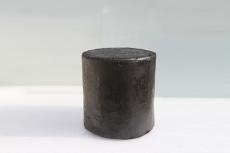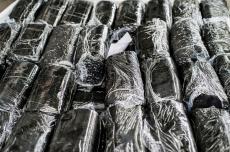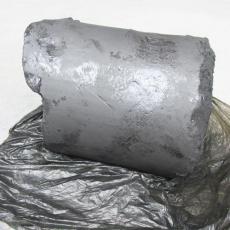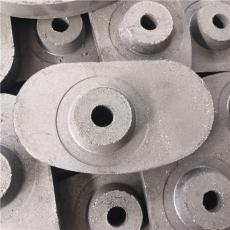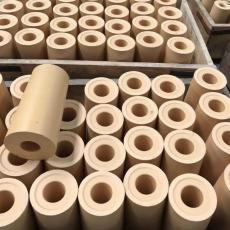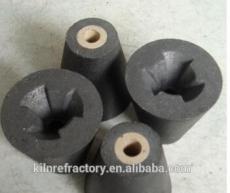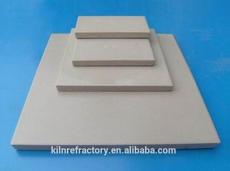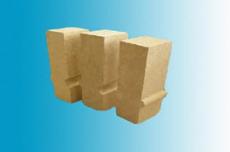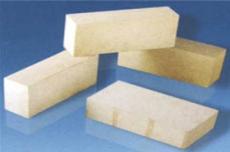
The properties of magnesia carbon bricks
Magnesia carbon bricks are carbon-bonded alkaline bricks made of magnesia sand, carbon raw materials, organic binders and additives, mixed, high-pressure molding and low-temperature treatment. Magnesia carbon bricks give full play to the advantages of alkaline materials and carbon materials, so they have excellent thermal shock resistance, spalling resistance, slag resistance and high-temperature creep resistance. They are ideal lining materials for metallurgical smelting furnaces and are highly valued by all countries. At present, my country can produce ordinary and high-strength magnesia carbon bricks, as well as functional products such as magnesia carbon breathable bricks, which can basically meet the needs of the development of the metallurgical industry.
As a refractory material for furnace lining, magnesium-carbon refractory effectively utilizes the slag erosion resistance of magnesium sand and the high thermal conductivity and low expansion of carbon, compensating for the biggest disadvantage of poor spalling resistance of magnesium sand. It mainly has the following excellent properties:
(1) High temperature resistance MgO and C have no eutectic relationship at high temperature, and both have high melting points. The melting point of magnesium oxide is 2800℃, and the melting point of carbon is above 3000℃. Therefore, the magnesium-carbon refractory made by combining the two has a high melting point and good high temperature resistance.
(2) Strong resistance to alkaline slag erosion MgO itself has strong resistance to alkaline slag and high iron slag. The wetting angle of graphite to slag is large, and the wetting performance with molten slag is very poor.
(3) Good thermal shock stability Among magnesium-carbon refractory materials, graphite has a high thermal conductivity, a very low thermal expansion coefficient and a small elastic modulus. Therefore, the refractory has good thermal shock stability. The performance of MgO-C bricks is mainly affected by the main and auxiliary raw materials, chemical composition, relative content of each component and mixture structure, but the type of binder, processing and molding technology also play an equally important role.
Production process of magnesia carbon bricks
1. Selection of raw materials: The raw materials for producing MgO-C bricks are mainly magnesia sand, and its technical requirements are high purity, few impurities, complete particle crystallization, uniform texture, low porosity and high volume density. Magnesia sand is divided into fused magnesia sand and sintered magnesia sand, but gradually replacing part of sintered magnesia sand with fused magnesia sand can significantly improve corrosion resistance. Carbon raw materials generally use natural flake graphite. It has no eutectic relationship with oxides such as MgO and does not form low-melting products. It has high thermal conductivity, small elastic modulus, low thermal expansion coefficient, and has the characteristics of non-wetting. Binder is a key material for the production of MgO-C bricks. Its technical requirements: (1) small wetting angle for carbon materials and good affinity; (2) high residual carbon rate; (3) low impurity and moisture content. Commonly used binders include phenolic resin, modified phenolic resin and tar asphalt. Synthetic phenolic resin is mostly used to produce MgO-C bricks. The main additives are Al, Mg, Si, Al-Mg, Al-Si, Al-Mg-Ca and other single metals and multi-metal powders, B4C, Al8BC7, Al4SiC4 and other carbon pure substances and composite alkalis, ZrB2, MgB, CaB6 and other borides.
2. Ratio: 50~60% of 5-1 (3-1) mm magnesia, 10% of <1 mm magnesia, 30~40% of <0.074 mm magnesia + graphite + additives, and 5% of resin (added). Mixing: The order of adding materials is generally magnesia particles - binder - graphite - magnesia fine powder and additives mixed fine powder. It is best to use a mixing device with a heating device, so that the resin has good fluidity and can achieve the purpose of uniform distribution.
3. Molding: When using a hydraulic press to produce MgO-C bricks, it is generally required to reach a pressure of 115~200MPa. The number of pressurizations cannot be less than 15 times. Heat treatment: MgO-C bricks are generally treated at a temperature of 200~250℃, and the heating system is: 50~60℃, due to the softening of the resin, it should be kept warm; 100~110℃, the solvent is discharged in large quantities, and it should be kept warm; 200 or 250℃, in order to make the reaction complete, it should be kept warm. It is not difficult to see that the production of MgO-C bricks has entered a limit state from raw materials to processes. Therefore, the improvement of the performance of existing MgO-C bricks will be slow and very limited. In addition, resources are also limited. Because graphite is easily oxidized, the high-temperature reaction of magnesium chloride and graphite always exists, especially in a vacuum metallurgical environment.
The redox reaction of MgO-C bricks and the redox reaction of oxide inclusions and carbon are determined by the nature of the substance. The easy oxidation of graphite is the dominant aspect that determines this nature. Therefore, artificial modification of graphite is an effective way to solve this problem. Only in this way can the chemical compatibility of MgO-C bricks be further improved, thereby promoting the development of MgO-C bricks. Causes of damage to magnesia carbon bricks
Damage process of magnesia carbon bricks:
The damage of magnesia carbon bricks is first due to the oxidation of carbon in the bricks, forming a decarburized layer, and the great difference in the thermal expansion coefficients of magnesium oxide and graphite at high temperatures (1.4% and 0.2% respectively at 1000°C), resulting in loose structure and reduced strength. After erosion by slag and mechanical scouring, the magnesium oxide particles in the bricks are gradually melted and fall off layer by layer, thus causing the damage of magnesia carbon bricks. The damage process of magnesia carbon bricks is: oxidation → decarburization → looseness → erosion → scouring → falling off → damage. A large amount of research work has proved that above 1600°C, the following reactions are the main causes of damage to magnesia carbon bricks. MgO(s)+C(s)→Mg(g)+CO(g)
(1) The damage of magnesia carbon bricks is firstly the oxidation of carbon in the hot surface of the working lining to form a thin decarburized layer. The oxidation of carbon is the result of continuous oxidation by iron oxides in the slag, O2 in the air, CO2, SiO2 and other oxides, as well as the vaporization of carbon by MgO dissolved in the molten steel or in the bricks. Secondly, the high-temperature liquid slag penetrates into the pores of the decarburized layer or the cracks caused by the action of heat, and reacts with the magnesium oxide in the bricks to form low-melting-point compounds, causing the surface layer of the bricks to undergo qualitative changes and weaken. Under the strong stress of slag stirring, mechanical scouring, etc., the bricks fall off layer by layer, resulting in the damage of magnesia carbon bricks. This cycle repeats itself, and the furnace lining becomes thinner layer by layer, and eventually the furnace is repaired, repaired, or shut down.
01 Carbon Oxidation The damage of magnesium carbon bricks is firstly the result of the oxidation of carbon in the bricks. The oxidation of carbon is carried out through the following reactions: Fe0+C→Fe+CO (2)O2+2C→2CO (3)CO2+C→2CO (4)SiO2(s)+C(s)→SiO(g)+CO(g) (5)MgO(s)+C(s)→Mg(g)+CO(g) (6) Due to the oxidation of carbon, the carbon network structure in the brick is destroyed, which makes the organizational structure loose and the strength of the product reduced. At the same time, the pores are increased, which also aggravates the erosion of the brick by the slag.
02 The influence of pores The pores in magnesium carbon bricks, especially the open pores, have an important influence on the damage of magnesium carbon bricks. During the use of magnesium carbon bricks, the oxidation damage of carbon is mainly promoted through the pores, which in turn aggravates the erosion of the brick lining by the slag, thereby causing the damage of magnesium carbon bricks. The open pores in the bricks inhale air from the outside when cooling. When reheated, the oxygen in the air reacts with the surrounding carbon to generate CO and discharge it. This process repeats itself, increasing the porosity. In addition, the binder present in magnesia carbon bricks is an important factor in the generation of pores. As a binder for magnesia carbon bricks, phenolic resin is generally used. Adding 3% to 4% phenolic resin, the porosity after molding is low, about 3%. However, during use, phenolic resin is heated and decomposed to produce H2O, H2, CH4, CO, CO2 and other gases that evaporate and discharge. The gas evaporation path forms pores, which also increases the porosity. In this way, the oxygen in the air and the oxides in the slag will corrode the bricks through the pores, which on the one hand promotes the oxidation damage of carbon, and on the other hand aggravates the reaction between the slag and MgO in the bricks, causing damage to the magnesia carbon bricks. This process repeats itself over and over again. Through the oxidation of carbon and the erosion of slag, on the one hand, the carbon network structure in the brick is destroyed, making the organizational structure loose and reducing the high-temperature strength. On the other hand, low-melting-point compounds are formed on the surface of the brick, weakening and deteriorating it. As a result, it falls off layer by layer under the stress of strong slag stirring, mechanical scouring, thermal shock, etc., causing damage to the magnesia carbon brick.
